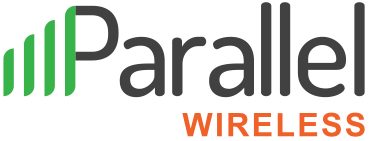Hands-on with your Hands Off: Zero Touch Provisioning in Mobile Networks
In the 21st century, being connected anytime and anywhere isn’t just a convenience—it’s a necessity. This drives the need for expansive mobile network coverage. With the upcoming advancements of 5G and IoT, and with the growing demand for traffic and performance, this grid of mobile cell stations will only become tighter and denser, making the network infrastructure and deployment much greater and more complex.
With so much equipment deployed at so many locations, the old ways of manual provisioning, where technicians travel to each cell location to install and set up each cell tower one by one, is simply not an option anymore. Minimizing field engineering resources is crucial, as it is no longer a question of cost but of viability. For Open RAN this becomes even more important, due to the technology’s nature which is based on COTS (Commercial off the shelf) servers. These require even more setup and configuration to be used as RAN equipment. Enters ZTP (Zero Touch Provisioning). With automation of the provisioning process, ZTP does not only save massive CAPEX and OPEX, but literally enables pushing out volumes of RAN equipment to the field.
The Complications of Provisioning
Why does it take so much time and effort to provision telecom infrastructure equipment? It starts with the basics. Off the shelf servers are general purpose equipment. As such, they don’t even have an operating system installed on them out of the box, not to mention cloud infrastructure, software stacks etc. Anyone that ever tried to install a home PC knows that the process is not only time consuming, but also complex, so imagine how much more complex the installation of mission-critical servers is. Beyond that, the possible configurations, network settings and optimizations are endless, making mass-installation and pre-staging equipment in the warehouse, for time saving, impractical. The configuration of each new RAN component that is deployed in the field must be aligned with all the components that are already there, and sometimes the settings of those components need to be modified as well. As the network technology advances and the demand for high performance grows, the topological characteristics and traffic patterns of the cell site, as well as those of adjacent sites, have an impact on the optimization of every network component. So, the process of provisioning is indeed a tricky one. Beyond that, brownfield installations, where the equipment is already in the field, but the system needs to be re-installed, takes this complexity to new levels.
The Benefits of Automation
Apart from the potential enablement and savings in terms of time and money, there are additional practical reasons to seek a more automated approach to provisioning. For one, the same automation that applies to setting up the equipment can also apply to network upgrades, reducing the risk of errors and simplifying the update/upgrade process while ensuring traceability by keeping logs. In addition, achieving consistent configurations through an automated ZTP process can reduce vulnerabilities and improve network security. And finally, from an operational standpoint, with the escalating numbers of units that need to be monitored and managed from a central console, ZTP enables scalable, efficient network management by helping adapt to changing network requirements while providing the management console a real-time view of the situation. That is why ZTP is built on top of automation practices such as infrastructure-as-code (IaC), development, security and operations (DevSecOps), GitOps, and pipelines to automate telco network infrastructure provisioning, and to ensure processes execute consistently.
Developing the Magic Touch
The typical provisioning process used to be labor intensive. Since engineers did not know what they did not know, they had to preconfigure equipment based on a site survey, then conduct a ‘test drive’ in the field to verify that it actually works and after that, they would get into the optimization. It was a lengthy, iterative process.
The idea of ZTP is to avoid all that. Their goal is explicitly spelled in the term “zero-touch” – deliver, fire up, and integrate the equipment into the network without any additional manual intervention. This starts in the network planning stages, where the performance requirements are assessed and the subsequent hardware characteristics of each component are defined. With Parallel Wireless’ hardware-agnostic RAN, it is not even necessary to identify at this stage which hardware platform will be used. When the order to procure the unit goes out, its intended destination is already updated, so the network management solution can anticipate the arrival of the unit. Once the unit is delivered and powered up, by self detection the unit will identify and recognize all the operational parameters such as the models of equipment, the quantity of units, the topology of the signaling, and configure itself accordingly. Some of these aspects are universal (e.g. every site needs fronthaul, every site needs PTP and security), and other case-specific aspects require automated identification. The goal is to bring the equipment all the way up to transmission-ready status.
Next, it is necessary to identify how well the equipment is functioning and whether it can do better. For that, a performance baseline needs to be established by the SMO (Service Management Orchestration), as optimal performance parameters such as latency, throughput and coverage can differ from site to site (e.g. urban vs. rural). The target values of such parameters are dynamically derived based on the site. Once the applicable “ideal performance” has been mapped out, the system needs to either make corrections or recommend corrective action. This performance monitoring aspect of the network can be powered by the Open-RAN RIC (RAN Intelligent Controller) platform and the xApps that run on it.
Zero Touch Provisioning is an excellent demonstration of the value that we can deliver with Open RAN and software-driven telecom equipment. The huge benefits for MNOs are made possible thanks to volumes of data that flow through open, standardized interfaces in the network, making the network much more intelligent, dynamic and responsive.
